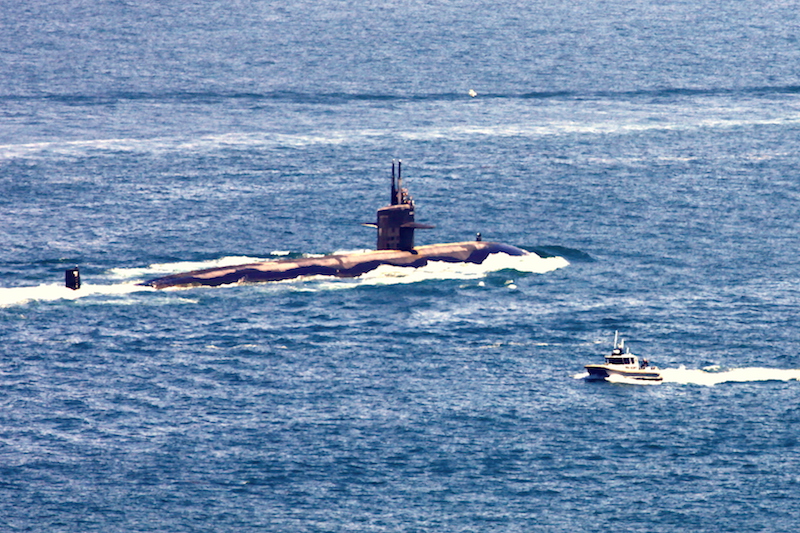The NATO Science and Technology Organization’s Centre for Maritime Research and Experimentation (NATO-CMRE) developed an underwater acoustics communication system called JANUS, which marks the first time that such a communications protocol has been internationally acknowledged. JANUS is an open-source acoustic signalling method that allows underwater systems to connect, essentially bringing other acoustic systems into sync. Since March 2017, it has been recognized by NATO Allies as being the standard digital underwater communications protocol.
Acoustic signalling uses sound waves to transmit wireless communications underwater; other forms of signalling are not as effective for underwater communication. JANUS defines a common frequency through which other systems can contact one another, before deciding to switch to a different frequency to communicate further. To analogize, it would be like two people in a foreign country speaking English, realizing they also speak French, and then switching their communications to French.
Ten years in the making, NATO-CMRE developed JANUS in La Speiza, Italy, where scientists focus their research on maritime domains. JANUS was further tested at sea in coordination with multiple institutions, ranging from universities to aboard the NATO Research Vessel Alliance, a 93-meter research ship.
The underwater network that makes communication possible includes ships interacting with land-based command and control centre(s) and underwater vehicles via gateway buoys, which, in turn, communicate with underwater robots acoustically, and via traditional methods above water. These underwater robots can also collect and exchange information, while also being capable of working together in missions, all by using simple sound waves to transmit signals. This could eliminate the need for human intervention in underwater operations and marine maintenance.
JANUS’s ingenuity lies in allowing information to be encoded into basic sound waves, so integration of the technology is easy. More remarkable is that this forges a new frontier in underwater communications, allowing for novel technological applications to emerge.
For naval applications, detecting and communicating with submarines becomes possible. Currently, information exchanges between submarine and ship vessels rely on radio waves. Even submarine-to-submarine communication is difficult because radio waves do not travel well through water. Also, the use of antennas above sea level to communicate between vessels is counterintuitive to the underwater role of submarines. But with the integration of JANUS, the burden is minimized. The Portuguese Navy has been working with NATO to test the efficacy of this for submarine communication. This can revolutionize the search and rescue process for submarines, and maritime operations alike.
Autonomous underwater vehicles (AUV), acting as underwater drones, can be used in a multitude of ways. Similar to what aerial drones have accomplished, AUVs can do the same–but underwater. Aside from search and rescue operations, AUVs can be deployed to survey the ocean floor, detect submerged wreckage and rocks to improve the navigation routes of ships. With JANUS, AUVs can coordinate with one another and send data to a control centre to enable better decision making for underwater missions, and drive hydrographic research forward. Future developments could investigate how to submerge AUVs for underwater exploration to depths that humans are physically incapable of reaching. Given the great mystery of what lies below, this is a feat worth looking forward to.
How JANUS’s applicability can revolutionize underwater warfare, either offensively or defensively, is worth monitoring. Aside from military operations, JANUS affords other benefits. With its software installed on AUVs, maritime research greatly benefits. The environmental health of the ocean could be monitored and recorded, like the impact of pollution on marine life. This aspect of JANUS welcomes academic and government collaboration worldwide. Canada, bordered by the Pacific, Arctic, and Atlantic oceans, should derive a vested interest in the opportunity presented by JANUS, particularly as it relates to the maritime provinces and Arctic.
The integration of JANUS for underwater communication underscores NATO’s goal of standardization, and by effect, interoperability. This has the benefit of enhancing coordination among the Alliance in cooperative missions by acting as a force multiplier. Should the future of defence and security be tipped in favour of naval capabilities, JANUS provides a platform for allies to act cohesively.
The earth is roughly 70% water, and now, NATO is ready to leverage that.
Photo: “San Diego Submarine” (2010) by Bill Morrow via Flickr. Licensed under CC BY 2.0.
Disclaimer: Any views or opinions expressed in articles are solely those of the authors
and do not necessarily represent the views of the NATO Association of Canada.




